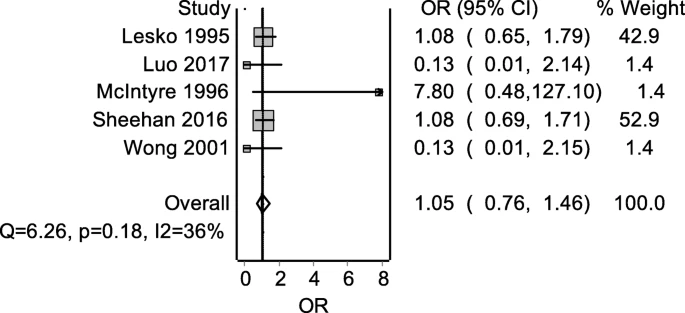Research article – Open Access
Mohamed Sherbash, Luis Furuya-Kanamori, Joanne Daghfal Nader & Lukman Thalib
BMC Pulmonary Medicine volume 20, Article number: 72 (2020)
Abstract
Background
Paracetamol and ibuprofen are the most commonly used medications for fever and pain management in children. While the efficacy appears similar with both drugs, there are contradictory findings related to adverse events. In particular, incidence of wheezing and asthma among children taking paracetamol compared to ibuprofen, remain unsettled.
Methods
We conducted a meta-analysis of randomized controlled trials (RCTs) that compared wheezing and asthma exacerbations in children taking paracetamol versus ibuprofen. A comprehensive search was conducted in five databases. RCTs reporting on cases of wheezing or asthma exacerbations in infants or children after the administration of paracetamol or ibuprofen were included. The pooled effect size was estimated using the Peto’s odds ratio.
Results

Five RCTs with 85,095 children were included in the analysis. The pooled estimate (OR 1.05; 95%CI 0.76–1.46) revealed no difference in the odds of developing asthma or presenting an exacerbation of asthma in children who received paracetamol compared to ibuprofen. When the analysis was restricted to RCTs that examined the incidence of asthma exacerbation or wheezing, the pooled estimate remained similar (OR 1.01; 95%CI 0.63–1.64). Additional bias adjusted quality effect sensitivity model yielded similar results (RR 1.03; 95%CI 0.84–1.28).
Conclusion
Although, Ibuprofen and paracetamol appear to have similar tolerance and safety profiles in terms of incidence of asthma exacerbations in children, we suggest high quality trials with clear definition of asthma outcomes after receiving ibuprofen or paracetamol at varying doses with longer follow-up are warranted for any conclusive finding.
